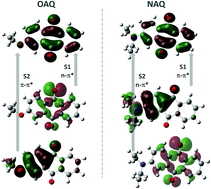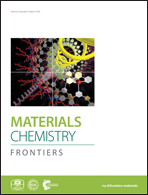Waterborne polyacrylates with thermally activated delayed fluorescence and two-state phosphorescence†
Abstract
Purely organic luminescent materials are extensively used in bioimaging, sensing and organic light-emitting diodes (OLEDs). Anthraquinone (AQ) derivatives with N- and O-substitution are incorporated into waterborne polyacrylates as single-component polymers with both thermally activated delayed fluorescence (TADF) and two-state phosphorescence. Essential structural and optical properties are characterized for these waterborne polyacrylates. With increasing dye loadings, a convergence between singlet and triplet states due to excitonic splittings is observed.

- This article is part of the themed collection: 2017 Emerging Investigators by MCF


 Please wait while we load your content...
Please wait while we load your content...